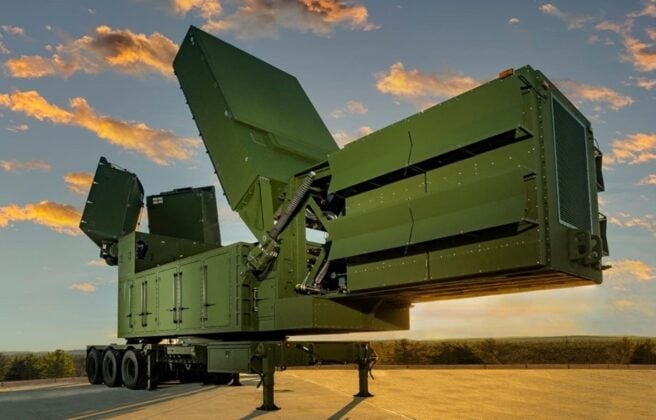
Raytheon Missiles and Defense has received a $1.7 billion contract modification to continue production of the U.S. Army’s Lower Tier Air and Missile Defense Sensor (LTAMDS), the Pentagon announced.
According to the Department of Defense, the $1,700,200,000 modification to contract W31P4Q-24-C-0024 will support the low-rate initial production of the LTAMDS program.
The award raises the cumulative total face value of the contract to $3,789,400,000. Work will be performed in Andover, Massachusetts, with an estimated completion date of December 28, 2029.
Funding for the latest award includes $397,410,000 in fiscal 2025 Foreign Military Sales funds allocated for Poland, along with $435,690,000 in fiscal 2025 Army missile procurement funds. The Army Contracting Command at Redstone Arsenal, Alabama, is the contracting authority.
Raytheon, a subsidiary of RTX, has described LTAMDS as a next-generation radar designed to provide 360-degree integrated air and missile defense coverage. The system is intended to counter a range of aerial threats, including ballistic and cruise missiles, as well as advanced unmanned aircraft.
“After achieving Milestone C earlier this year, which initiated the production and deployment phase, Raytheon continues to ramp up production to meet the fast-growing demand from the U.S. Army and international partners,” said Tom Laliberty, president of Land & Air Defense Systems at Raytheon, in a company statement.
The LTAMDS program is a centerpiece of the Army’s modernization effort to replace the decades-old Patriot radar system with a platform capable of detecting and tracking more advanced and complex threats. Built with an active electronically scanned array and advanced gallium nitride (GaN) technology, the radar expands detection range, improves reliability, and provides enhanced resilience against electronic warfare.
Raytheon’s facility in Andover, Massachusetts, will lead the production effort, supported by a network of suppliers across the United States. Deliveries under this contract are scheduled to continue through the end of 2029, ensuring long-term sustainment of the Army’s evolving air defense capabilities.